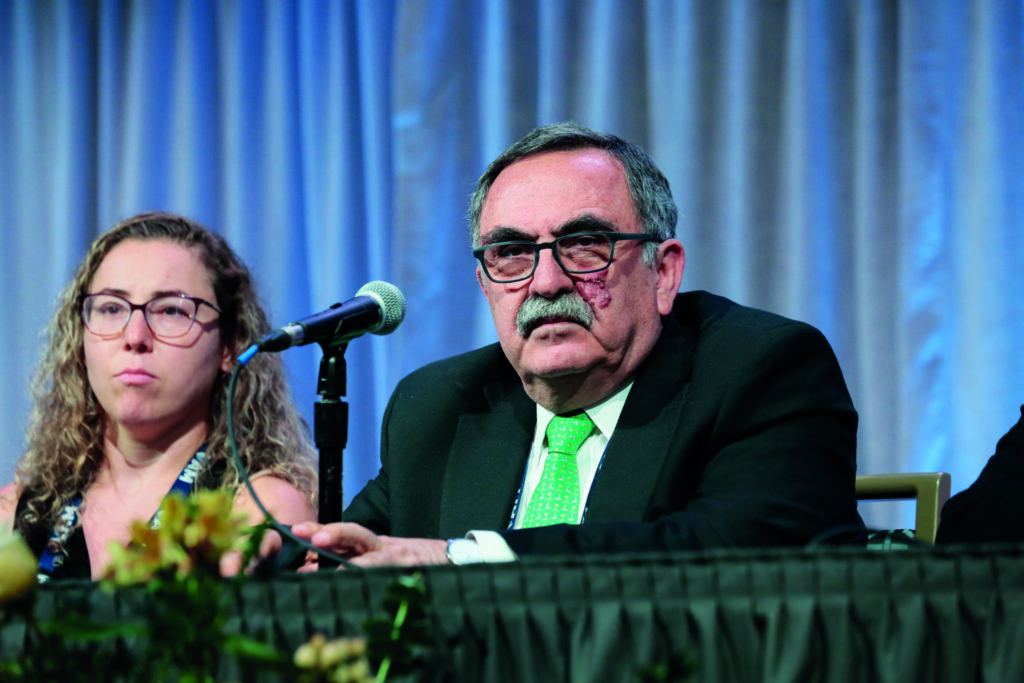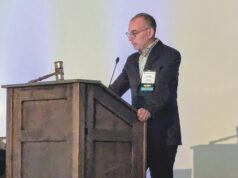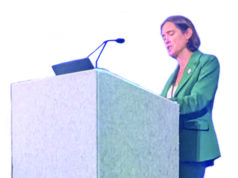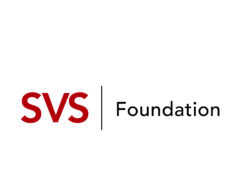
Yesterday’s E. Stanley Crawford Critical Issues Forum, which looked at ways to address the pipeline of sources feeding the vascular surgery pool of talent, yielded an illuminating perspective on the looming workforce crisis currently occupying leaders in the field.
Speaking from the VAM 2023 audience after the six-strong panel concluded their talks, Rana Afifi, MD, from McGovern Medical School, University of Texas Health Houston, introduced herself to the panel of experts assembled by organizer President-Elect Joseph Mills, MD, as a non-Board-certified vascular surgeon—and as someone not eligible for the U.S. Board. “I graduated from my residency-fellowship outside of the U.S., and came for super-fellowship in the U.S.,” she told them, describing the many “obstacles and problems” she has encountered on her path toward Board eligibility. “I was told after PGY-11 years: Repeat. Repeat your residency.”
Despite the challenges, Afifi continued, she found a way forward and is now practicing, but pointed out she is not represented in the statistics produced by former SVS President Michel S. Makaroun, MD, from the University of Pittsburgh Medical Center, whose talk honed in on the question of insufficient supply or maldistribution in the workforce pipeline.
“I’m pretty sure there are a lot of others who are struggling—who either leave, are frustrated, are broken because they feel inadequate, or they compete for spots for people in the U.S.,” Afifi elaborated.
She addressed a need for “more creative” solutions in efforts aimed at finding an alternative pathway for people who graduated from residency outside of the U.S. “Have we reached out as a vascular society to other societies to see if they have found solutions that can create more spots?”
Responding, Makaroun said he completely agreed with the need for creativity in the search for more surgeons to bolster the workforce. “I believe you are a member of the SVS and you are counted in the group that is called ‘early-active,’” he continued. “The people who are not Board-eligible are still part of those statistics, so we are not ignoring you. But I totally agree with you that we need to look for other opportunities to have support for our workforce.”
The Crawford Forum is developed by the incoming SVS president to address long-range issues deemed critical to the specialty, with Mills focusing the theme on the complexity of the issues contained within the workforce pipeline. He titled the forum, “The State and Future of Our Specialty— Extending, Repairing and Maintaining the Vascular Surgery Pipeline.”
Mills deems the challenges multifaceted, saying: “The pipeline is not one line. It has multiple connections that come from multiple places and go to multiple places.”
The panel captured three main areas of focus: the root sources of future vascular surgeons, the existing workforce, and the distribution of that workforce. Lee Kirksey, MD, from the Cleveland Clinic in Ohio looked at outreach to high school and college students and Malachi Sheahan III, MD, from Louisiana State University in New Orleans, dealt with efforts to attract medical students and residents in training. Dawn M. Coleman, MD, from Duke University Medical Center in Durham, North Carolina, addressed vascular surgeon wellness, followed by Laura Marie Drudi, MD, from Centre Hospitalier de l’Universite de Montreal in Canada, on burnout solutions. The panel was rounded out by former SVS President Makaroun, on workforce supply or maldistribution, and Peter R. Nelson, MD, from the University of Oklahoma in Tulsa, on prophylactic measures to improve the workforce crisis.












